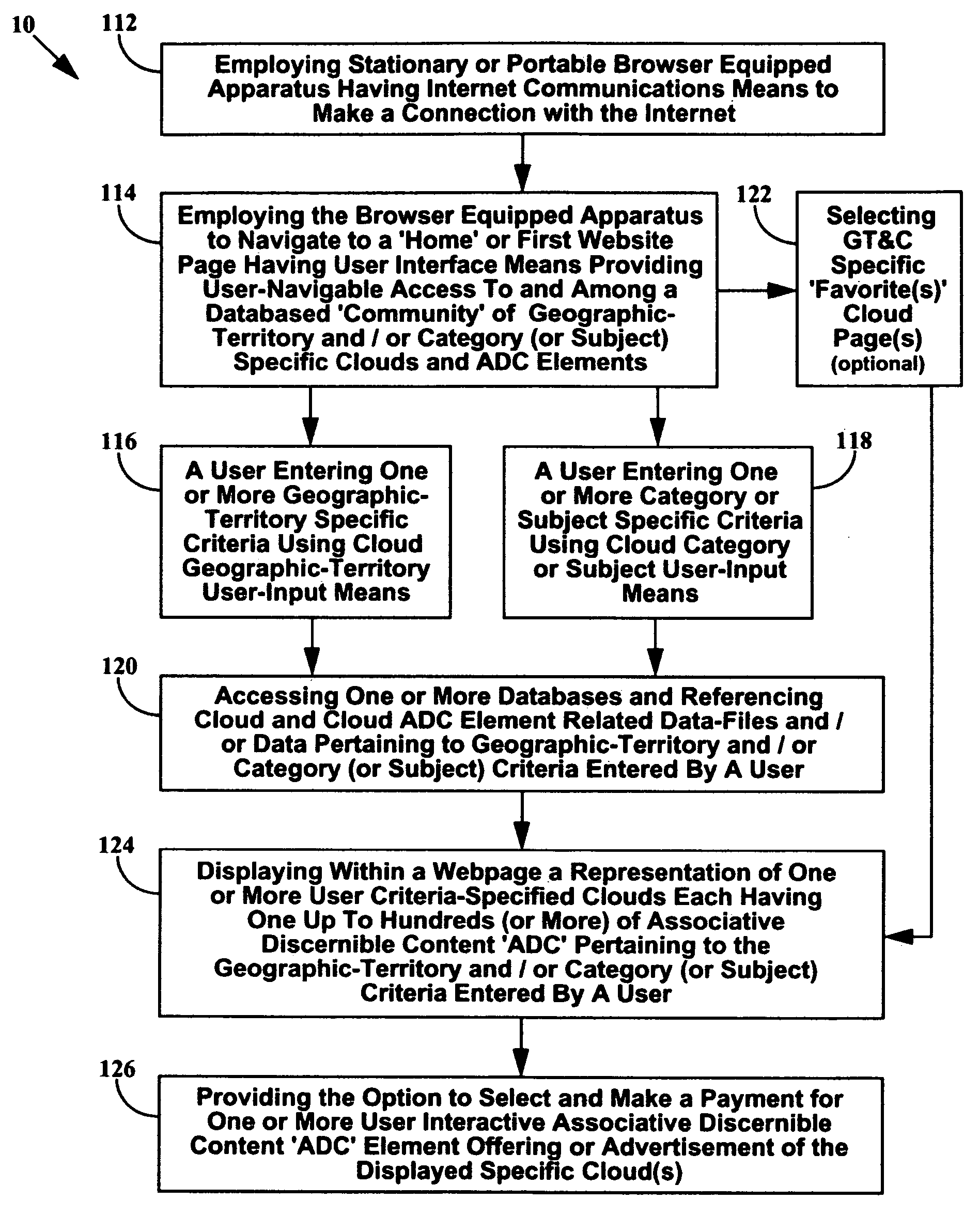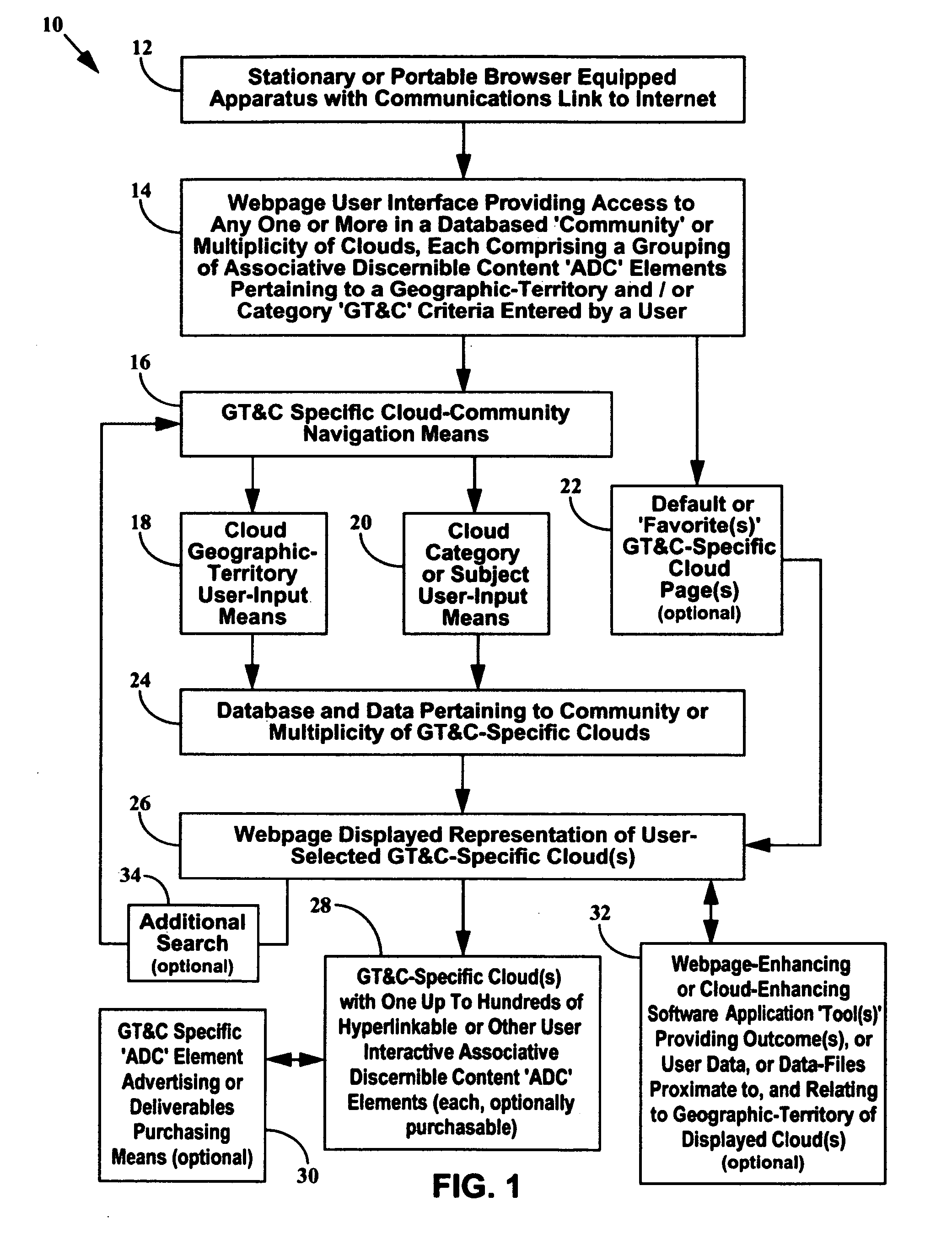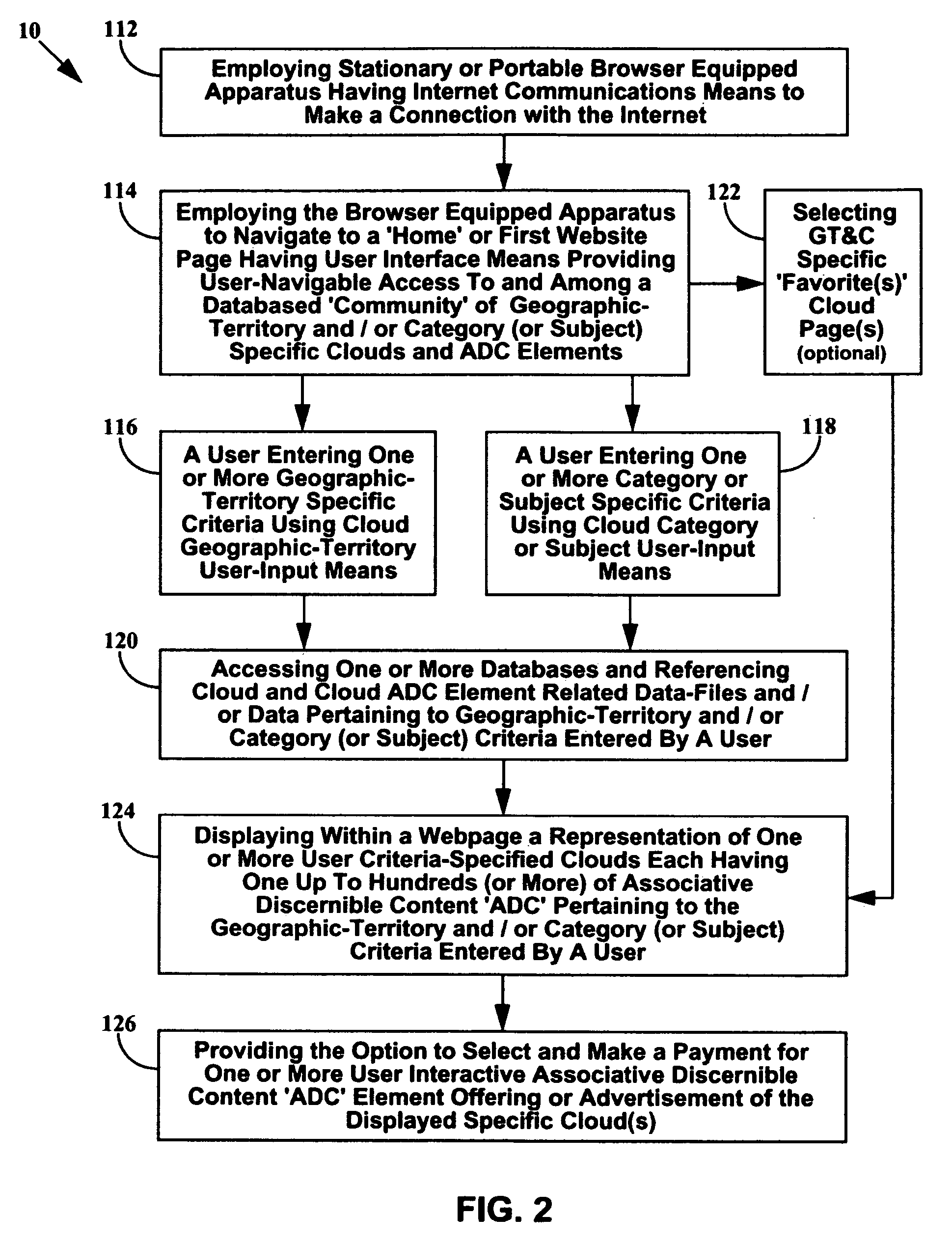In the earlier days of the search-engine, the results of interne searches were often poor if not quite frustrating to the user.
While such search-engine approaches have been successful, they are nonetheless at present, less than ideal, particularly in the area of getting a range of search results (and advertising content) specific to a geographic-territory of interest to a user.
One problem in search-engine approaches producing a minority of geographic-territory relevant search-result hits is that such results are less than ideal for creating an association (in the mind of a user) between the minority of geographic-territory specific results and geographic-territory specific content generated by the user viewable in one or more co-locatable software programs or components simultaneously displayable in a single user interface (‘SUI’) or single Web page.
Other problems persist in the status quo search-engine approaches.
For example, in a conventional approach, if a search is narrowed by adding geographic-territory specific search criteria such as a zip code, often such search results are less than ideal in that a generic text-based listing of ‘hits’ is provided wherein each hit is merely displayed in a text format which is nearly identical to the other hits.
Another disadvantage with the status quo search-engine approaches is that the text-based listing of their search results requires a user to navigate to a different Web site in order to find out more information about how to choose among one or more of the, or the type(s) of, or particulars of the, propositions, or offerings, or deliverables provided by a listed merchant or service or activity provider.
While such cloud-like arrangements of words have a context that can be effective in suggesting generally or loosely related subject matter to a user, the prior word cloud approaches are less than ideal for some of the same reasons relating to the aforementioned internet search-engine approaches.
In particular, there is no comprehensive or standardized navigable and searchable databased ‘community’, multiplicity or network of geographic-territory specific word clouds or cloud-like groupings of geographic-territory specific associative discernible content elements (hereinafter referred to as ‘ADC’ elements).
In prior word cloud approaches the clouds are not equipped, or directed at increasing advertising exposure probability to users in, or having an interest in subject matter pertaining to, a particular location, and often provide only a modest ‘draw’ due to an absence of, or a limited, compelling reason to go to the Web page in which a word cloud is displayed.
Additionally, there is currently no comprehensive and standardized word cloud-incorporating approach that a user can employ when searching for information pertaining to, or navigating on the internet to, different localities of interest, or when navigating among a databased ‘community’ or multiplicity of different localities of interest, and upon being presented search results pertaining to any of such localities, interact with the elements of a geographic-territory and category (or subject) specific word cloud or cloud-like arrangement in a consistent and predictable manner.
There are additional disadvantages with the status quo search-engine advertising business model that can be understood from an advertiser's perspective.
For example, whether an advertisement is being placed by a professional advertiser or a novice, the previous advertising approach typically has a level of complexity which can be daunting and consequently result in a significant loss of advertising revenue.
Another issue of great concern to internes commerce businesses which provide pay per click compensation to users is fraud.
It is estimated that fraud related to pay per click advertising on the internet is a multi-billion dollar problem.
The victims of this fraud are advertisers and particularly advertiser's clients who pay out this money
 Login to View More
Login to View More  Login to View More
Login to View More 


